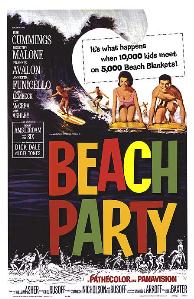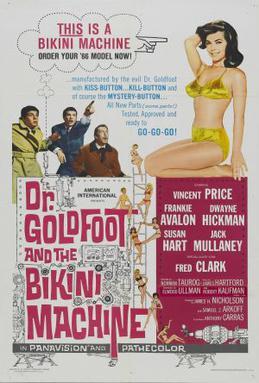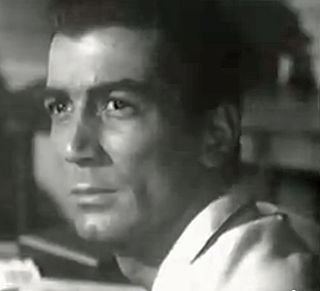
Ernest Edward Kovacs was an American comedian, actor, and writer.

Bugsy is a 1991 American biographical crime drama film directed by Barry Levinson and written by James Toback. The film stars Warren Beatty, Annette Bening, Harvey Keitel, Ben Kingsley, Elliott Gould, Bebe Neuwirth, and Joe Mantegna. It is based on the life of American mobster Bugsy Siegel and his relationship with wife and starlet Virginia Hill.

Fabian Anthony Forte, professionally known as Fabian, is an American singer and actor.

Francis Thomas Avallone , better known as Frankie Avalon, is an American actor, singer, and former teen idol. He had 31 charting U.S. Billboard singles from 1958 to late 1962, including number one hits, "Venus" and "Why" in 1959.

Barry Lee Levinson is an American film director, producer and screenwriter. His best-known works are mid-budget comedy drama and drama films such as Diner (1982), The Natural (1984), Good Morning, Vietnam (1987), Bugsy (1991), and Wag the Dog (1997). Levinson won the Academy Award for Best Director for Rain Man (1988). In 2021, he co-executive produced the Hulu miniseries Dopesick and directed the first two episodes.

Robert John Wagner Jr. is an American actor of stage, screen, and television. He is known for starring in the television shows It Takes a Thief (1968–1970), Switch (1975–1978), and Hart to Hart (1979–1984). He later had recurring roles on Two and a Half Men (2007–2008) and NCIS (2010–2019).

Richard Quine was an American director, actor, and singer.
Nathaniel Goddard Benchley was an American writer from Massachusetts.

Where the Boys Are is a 1960 American CinemaScope comedy film directed by Henry Levin and starring Connie Francis, Dolores Hart, Paula Prentiss, George Hamilton, Yvette Mimieux, Jim Hutton, and Frank Gorshin. It was written by George Wells based on the 1960 novel of the same name by Glendon Swarthout. The screenplay concerns four female college students who spend spring break in Fort Lauderdale. The title song "Where the Boys Are" was sung by Connie Francis, who also co-starred in a supporting role.

Beach Party is a 1963 American film and the first of seven beach party films from American International Pictures (AIP) aimed at a teen audience. This film is often credited with creating the beach party film genre.

North to Alaska is a 1960 American comedy Western/Northern film directed by Henry Hathaway and John Wayne (uncredited). The picture stars Wayne along with Stewart Granger, Ernie Kovacs, Fabian, and Capucine. The script is based on the 1939 play Birthday Gift by Ladislas Fodor and is set during the Nome gold rush.

Dr. Goldfoot and the Bikini Machine is a 1965 Pathécolor comedy film directed by Norman Taurog and distributed by American International Pictures. Starring Vincent Price, Frankie Avalon, Dwayne Hickman, Susan Hart and Jack Mullaney, and featuring Fred Clark, the film is a parody of the then-popular spy trend, made using actors from AIP's beach party and Edgar Allan Poe films. The film was retitled Dr G. and the Bikini Machine in England due to a threatened lawsuit from Eon, holder of the rights to the James Bond series.

Pajama Party is a 1964 beach party film starring Tommy Kirk and Annette Funicello. This is the fourth in a series of seven beach films produced by American International Pictures. The other films in this series are Beach Party (1963), Muscle Beach Party (1964), Bikini Beach (1964), Beach Blanket Bingo (1965), How to Stuff a Wild Bikini (1965), Ski Party (1965) and The Ghost in the Invisible Bikini (1966).
Irving S. Brecher was a screenwriter who wrote for the Marx Brothers among many others; he was the only writer to get sole credit on a Marx Brothers film, penning the screenplays for At the Circus (1939) and Go West (1940). He was also one of the numerous uncredited writers on the screenplay of The Wizard of Oz (1939). Some of his other screenplays were Shadow of the Thin Man (1941), Ziegfeld Follies (1945) and Bye Bye Birdie (1963).

Our Man in Havana is a 1959 British spy comedy film shot in CinemaScope, directed and produced by Carol Reed, and starring Alec Guinness, Burl Ives, Maureen O'Hara, Ralph Richardson, Noël Coward and Ernie Kovacs. The film is adapted from the 1958 novel Our Man in Havana by Graham Greene. The film takes the action of the novel and gives it a more comedic touch. The movie marks Reed's third collaboration with Greene.

The Wackiest Ship in the Army is an American 1960 Eastmancolor CinemaScope comedy-drama war film directed by Richard Murphy and starring Jack Lemmon, Ricky Nelson, and Chips Rafferty. It was filmed at Pearl Harbor and Kauai.
Stewart Bridgewater Linder was an American film editor with 25 credits. He shared the Academy Award for Best Film Editing for the 1966 film Grand Prix, which was the very first film on which Linder was credited as an editor. Linder is particularly noted for his long collaboration (1982–2006) with the director Barry Levinson. Perhaps the best remembered film from their collaboration, which extended over 20 films, was Rain Man (1988), which won the Academy Award for Best Picture. Linder won an ACE Eddie award for editing this film, and was nominated for both the Academy Award and the BAFTA Award for Best Editing.

Guns of the Timberland is a 1960 American Technicolor lumberjack Western film directed by Robert D. Webb and starring Alan Ladd, Jeanne Crain, Gilbert Roland and Frankie Avalon.

The George Raft Story is a 1961 American biographical film directed by Joseph M. Newman that stars Ray Danton as Hollywood film star George Raft. The picture was retitled Spin of a Coin for release in the United Kingdom, a reference to Raft's character's nickel-flipping trick in Scarface (1932), the film that launched his career as an actor known for portraying gangsters.

The Inspector is a 1962 CinemaScope DeLuxe Color British-American drama film directed by Philip Dunne, starring Stephen Boyd and Dolores Hart. Hart plays Lisa Held, a Dutch-Jewish girl who has survived the horror of Auschwitz concentration camp.

















